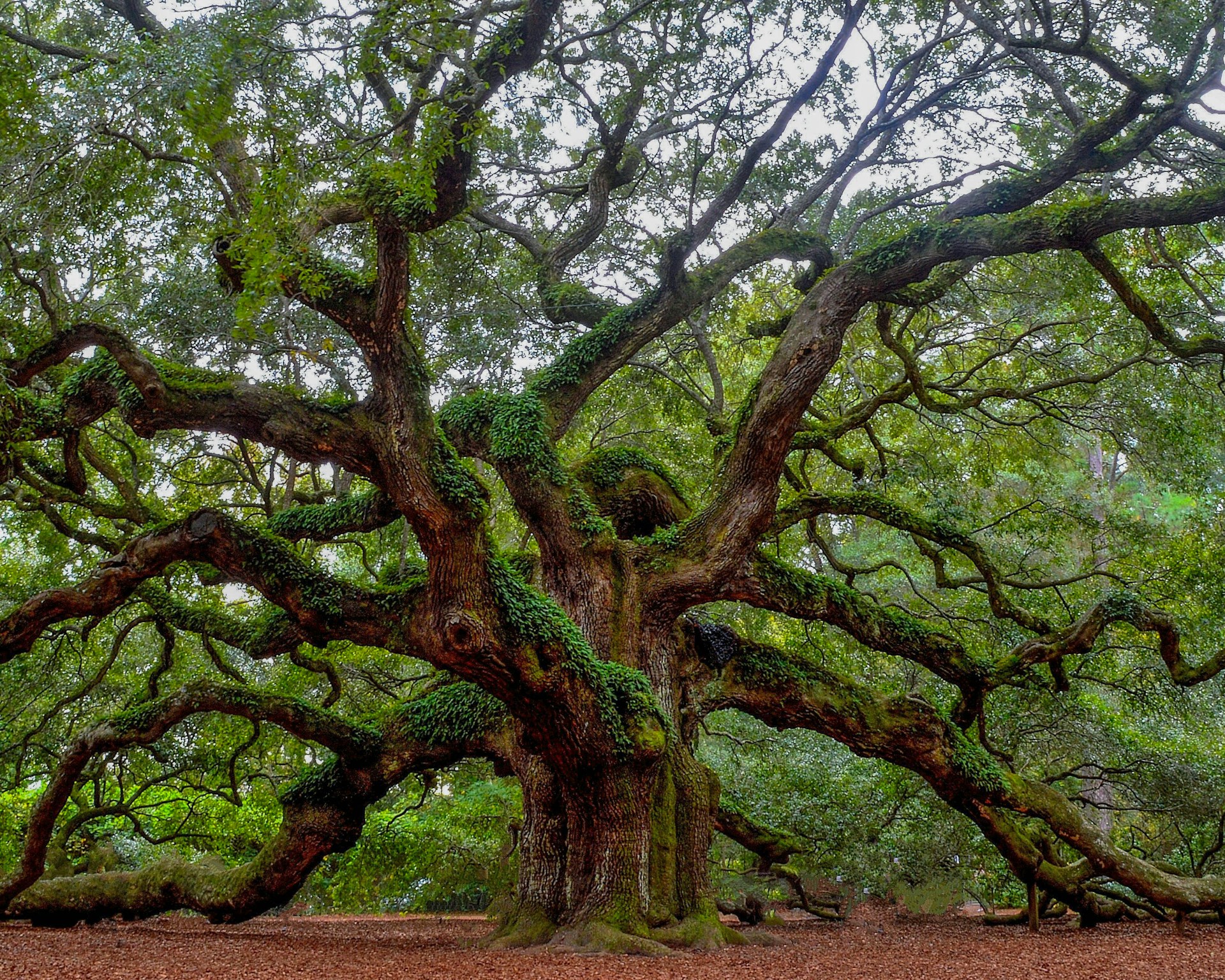
Oak trees are revered for their strength and longevity, but understanding the timeline of their growth can be quite intriguing. There is a common curiosity about how long it takes for these majestic trees to reach their full potential. The growth rate of oak trees is influenced by a variety of factors including their species, the conditions in which they are planted, and the care they receive throughout their life. Certain species can take upwards of 20 to 30 years to reach maturity, while others may take even longer to fully develop and begin producing acorns.
The process of an oak tree’s development begins from an acorn and evolves through distinct stages of growth. These stages encompass germination, sapling growth, and finally maturation. Each stage is critical and has its own set of requirements that influence the overall growth rate. Proper planting techniques and diligent care, such as providing enough space, sunlight, and water, can significantly impact an oak tree’s health and growth speed. Conversely, obstacles such as disease, pests, and poor soil conditions can hinder growth and even threaten the tree’s survival.
Key Takeaways
- Oak trees have a varied growth rate, with some taking 20-30 years to mature.
- Meticulous planting and ongoing care enhance an oak tree’s growth and health.
- Challenges like pests and disease can significantly impede an oak tree’s development.
Oak Tree Fundamentals
Oak trees, members of the genus Quercus, are known for their notable variations in species and growth rates. They thrive under specific conditions and proceed through distinct lifecycle stages.
Species Variation and Their Growth Rates
There are over 600 species of oak trees which fall into two primary categories: red oaks and white oaks. The growth rate of these trees is largely influenced by their species. For example, the Quercus rubra (red oak) can grow more rapidly than the Quercus alba (white oak), achieving a growth rate of about 2 feet per year under optimal conditions. However, slower growing species like the English oak (Quercus robur) and the white oak typically increase in height by less than a foot each year.
- Red Oaks: Approximately 2 feet per year (e.g., Northern red oak, black oak, Nuttall oak)
- White Oaks: Up to 1 foot per year (e.g., White oak, bur oak, chinkapin oak)
Ideal Growing Conditions
Oak trees flourish in a climate that offers full sunlight and well-drained soil. They benefit from moderate water, neither too wet nor too dry, and exhibit a preference for slightly acidic to neutral pH levels in the soil. Although oaks are generally adaptable, the ideal conditions for their growth include:
- Sunlight: Full sun exposure
- Soil: Well-drained with slight acidity
- Water: Moderate moisture without waterlogging
- Climate: Temperate regions with defined seasons
Lifecycle Stages of Oak Trees
The lifecycle of an oak tree spans from seed to sapling, into maturity, and eventual old age. Germination from an acorn can take weeks, with a sapling stage lasting several years before achieving maturity. Once mature, oak trees such as the live oak or evergreen oak species are vigorous and can live for centuries. The broad stages of an oak tree’s life are as follows:
- Seed: Acorn germination varies by species
- Sapling: Growth continues for 20-30 years
- Maturity: May take 75-100 years to reach
- Lifespan: Often exceeds 200 years, with some species living up to 400 years or more
These fundamentals give insight into the intricate relationship between oak tree species, their growing conditions, and stages of development.
Planting and Care for Optimal Growth
The success of oak tree growth is largely influenced by initial planting techniques and ongoing care. Proper soil conditions, adequate watering and nutrient supply, as well as effective management of sunlight and shading, are vital for optimal growth.
The Importance of Soil Conditions
Oak trees thrive in well-drained soil with a pH level typically between 5.5 and 6.5. Soil testing is recommended before planting to ensure the site is suitable. It’s critical to:
- Prepare the soil: Loosen the soil to a depth of 18 inches and a width of 3 feet.
- Test for pH: Amend the soil if necessary to hit the ideal pH range.
Watering and Nutrient Needs
Regular watering is essential, especially for young trees establishing root systems. Follow these practices:
- Water: Provide 1-2 inches of water weekly.
- Fertilizer: In early spring, apply a balanced fertilizer rich in nitrogen and phosphorus.
- Maintain a schedule: Consistent application aids in steady growth.
- Recognize signs of over/under-fertilizing: Look for discolored leaves or slowed growth.
Managing Sunlight and Shade
Oak trees require full sun to partial shade to achieve optimal growth. Underscored by the fact oak trees are commonly sought as shade trees in landscapes, ample sunlight is necessary for their development. Keep in mind:
- Sunlight: At least 4-6 hours of direct sunlight daily promotes healthy growth.
- Shade: Mature oaks can provide shade, benefiting the surrounding garden ecosystem. However, too much shade from other sources can be detrimental, especially for young oaks.
Challenges in Oak Tree Development
The growth of oak trees is often obstructed by various biological and environmental challenges. Addressing these issues early is key to ensuring the healthy development of these trees.
Diseases and Pests
Oak trees are susceptible to a plethora of diseases and pests that can significantly hinder their growth. Oak wilt is a fungal disease caused by Bretziella fagacearum that prevents the tree from adequately dispersing water and nutrients. Symptoms include leaf discoloration, wilt, and eventual tree death. Sudden oak death, caused by the pathogen Phytophthora ramorum, leads to cankers and foliage decline.
Pests such as the gypsy moth caterpillars and the oak processionary moth are also significant threats. These caterpillars feed on the leaves, causing defoliation and reducing the tree’s capacity for photosynthesis. An infestation can severely weaken the tree, impacting its ability to produce acorns and making it more prone to other stresses.
| Diseases | Effects on Oak Trees |
|---|---|
| Oak Wilt | Wilting, discoloration, death |
| Sudden Oak Death | Cankers, foliage decline |
| Pests | Consequences for Oaks |
|---|---|
| Gypsy Moth | Defoliation, growth decline |
| Oak Processionary | Leaf damage, health hazards |
Physical Factors Influencing Growth
The physical environment has a direct and substantial effect on the development of oak trees. Soil quality, sun exposure, and water availability each play a role. Oak trees thrive in well-draining soil but may suffer in poorly drained conditions which can lead to root rot and overall health decline. Proper care such as periodic pruning by an arborist helps in maintaining structural integrity and encourages robust growth.
Extreme weather conditions such as prolonged droughts or floods stress the trees and may result in stunted growth or increased vulnerability to diseases and pests. Careful monitoring and intervention by tree care professionals can mitigate these challenges and support the tree’s development through its various life stages.
| Environmental Factor | Implication for Oaks |
|---|---|
| Soil Quality | Determines health and vigor |
| Water Availability | Affects nutrient absorption and growth |
| Sun Exposure | Influences photosynthesis and growth |
The Bigger Picture: Oak Trees in the Ecosystem
Oak trees play a vital role in ecosystems, influencing wildlife, promoting biodiversity, and leaving a lasting legacy through their ecological contributions. These robust trees not only support various life forms but also play a crucial part in maintaining the intricate balance of nature.
Oak Trees and Wildlife
- Habitat: Oaks provide crucial habitats for a wide range of wildlife. The hefty branches are often home to bird species, while the cavities in their bark harbor insects and small mammals.
- Food Source: The acorns, foliage, and even the saplings serve as vital sources of nutrition for numerous creatures.
| Wildlife Species | Dependence on Oak Trees |
|---|---|
| Birds | Nesting sites and food (acorns) |
| Insects | Foliage for larvae; bark as habitat |
| Mammals | Acorns and shelter |
Root System’s Role: The extensive root system of an oak stabilizes the soil, reducing erosion and creating an environment where water can be efficiently absorbed and retained, benefiting both the oak and surrounding flora.
Contributions to Biodiversity and Legacy
- Biodiversity Hotspots: Each oak tree species, with its distinct lobed leaves, foliage, and bark, becomes a microhabitat that fosters a diverse range of organisms.
- Deciduous Nature and Photosynthesis: As a deciduous tree, the oak plays a significant role in photosynthesis, which is essential for converting carbon dioxide into oxygen, benefiting the entire ecosystem by mitigating carbon levels.
| Legacy Aspects | Description |
|---|---|
| Genetic Diversity | Oaks, including the Water Oak, contribute to the genetic diversity of forests. |
| Ecological Impact | Oaks’ longevity ensures a lasting ecological footprint, influencing the ecosystem over centuries. |
Comparison to Maple Trees: In comparison to maple trees, oaks generally have a slower growth rate, but their contribution to the habitat and biodiversity is comparable, if not greater, due to their complex structure and adaptations.
Oak trees contribute immensely to ecosystem dynamics, fulfilling essential roles in supporting wildlife, enhancing biodiversity, and creating a sustainable natural legacy.




